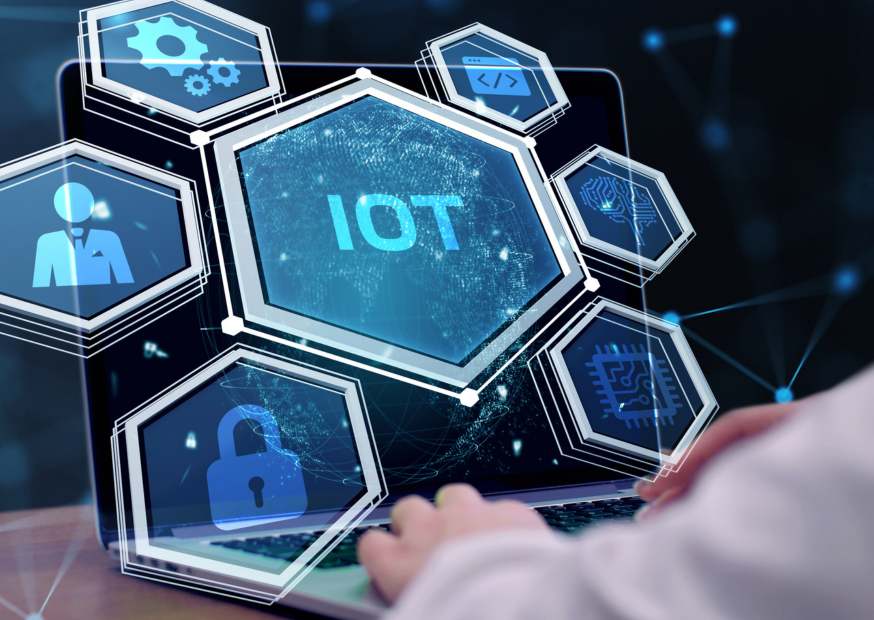- marketing admin
- Articles
In the grand tapestry of human history, the march of progress has often been marked by transformative revolutions. From the advent of steam-powered machines during the Industrial Revolution to the emergence of artificial intelligence in the present era, our world has continuously evolved, reshaping the fabric of society and redefining our understanding of existence. Yet, amidst these seismic shifts, it is essential to recognize that the word we are born into is not the world we live in.
The first industrial revolution witnessed the rise of machines that usurped the role of human labor, weaving the intricate threads of industry with unprecedented efficiency. It forever altered the dynamics of society, challenging long-held beliefs and reshaping our perception of work and human identity. Today, we find ourselves on the cusp of yet another industrial revolution, one in which artificial intelligence assumes the mantle of innovation.
The Industrial Internet of Things (IIoT)
The Industrial Internet of Things (IIoT) refers to the interconnected network of devices, sensors, and machinery in industrial settings, enabling the collection, analysis, and sharing of data. IIoT leverages the power of the Internet and advanced technologies such as cloud computing, artificial intelligence, and machine learning to optimize industrial processes, enhance efficiency, and enable smart decision-making. By connecting various components within factories, supply chains, and infrastructure, IIoT facilitates real-time monitoring, predictive maintenance, and automation, leading to improved productivity, reduced downtime, cost savings, and enhanced safety. It empowers industries to harness the potential of data-driven insights for transformative and sustainable growth.
The Industrial Internet of Things (IIoT) is revolutionizing the way industries operate, enabling seamless connectivity and data exchange between devices, machines, and systems. With its ability to gather and analyze vast amounts of real-time data, IIoT has opened up new frontiers of efficiency, productivity, and innovation. In this article, we will explore the definition and historical context of Industrial IoT, delve into key milestones in its development, examine the role of technology advancements, discuss industries at the forefront of adoption, and finally, highlight current trends and future prospects.
Definition and Historical Context of Industrial IoT
The Industrial Internet of Things, also known as Industrial IoT or IIoT, refers to the network of interconnected devices, machines, and systems in industrial environments, which leverage advanced sensors, analytics, and connectivity technologies to collect, exchange, and analyze data. IIoT is an extension of the broader concept of IoT, but with a focus on industrial sectors such as manufacturing, energy, transportation, and agriculture.
The roots of IIoT can be traced back to the integration of internet technologies with industrial automation systems in the 1990s. As internet connectivity became more accessible, industrial systems began to leverage it for remote monitoring and control. This marked the initial stage of IIoT, where the focus was primarily on connecting machines and devices to centralized systems.
Key Milestones in the Development of Industrial IoT
The development of IIoT has seen several key milestones that have shaped its evolution:
- Connectivity Advancements: The proliferation of wireless technologies, such as Wi-Fi, Bluetooth, and cellular networks, played a crucial role in enabling seamless connectivity between devices and systems. These advancements allowed for real-time data collection and analysis, even in remote or challenging environments.
- Sensor Technology: The miniaturization and cost reduction of sensors have been instrumental in the growth of IIoT. Advanced sensors capable of measuring temperature, pressure, humidity, vibration, and other variables are now embedded in various industrial equipment, enabling real-time monitoring and predictive maintenance.
- Cloud Computing: The rise of cloud computing provided the scalability and storage capabilities required to handle the massive amounts of data generated by IIoT devices. Cloud platforms enabled efficient data analysis, remote access, and seamless integration with other digital systems.
- Big Data and Analytics: The ability to collect and process vast amounts of data generated by IIoT devices led to the emergence of big data analytics. Advanced analytics techniques, including machine learning and artificial intelligence, enable real-time insights, predictive maintenance, and optimization of industrial processes.
Industries at the Forefront of Adoption
Several industries have been early adopters and innovators in the realm of IIoT, driving its growth and implementation:
- Manufacturing: The manufacturing sector has been a frontrunner in adopting IIoT technologies to optimize production processes, improve quality control, and enable predictive maintenance. Connected sensors and machines facilitate real-time monitoring, inventory management, and supply chain optimization.
- Energy and Utilities: The energy and utilities industry has leveraged IIoT to enhance the efficiency and reliability of power generation, transmission, and distribution. Smart grid systems, intelligent sensors, and energy management solutions enable real-time monitoring, energy optimization, and demand response.
- Transportation and Logistics: IIoT has transformed the transportation and logistics sector by enabling real-time tracking and monitoring of assets, optimizing routes and schedules, and improving fleet management. Connected sensors and devices in vehicles provide valuable data on fuel consumption, vehicle performance, and driver behavior.
- Agriculture: The agricultural sector has embraced IIoT to optimize crop production, livestock monitoring, and irrigation systems. Connected sensors, drones, and autonomous machinery provide valuable insights into soil conditions.
Disrupting the market:
AI and ML are revolutionizing industries and society during the ongoing industrial revolution. They automate tasks, transforming job roles and creating new opportunities for workers. They enhance safety by enabling predictive maintenance and analyzing real-time data for workplace safety. AI and ML optimize supply chains, reducing costs and improving logistics operations. They personalize customer experiences by analyzing data and delivering personalized products and services. Additionally, AI and ML promote sustainability by optimizing energy consumption and reducing waste. Overall, these technologies drive productivity, safety, efficiency, personalization, and sustainability, shaping a connected and sustainable future.



